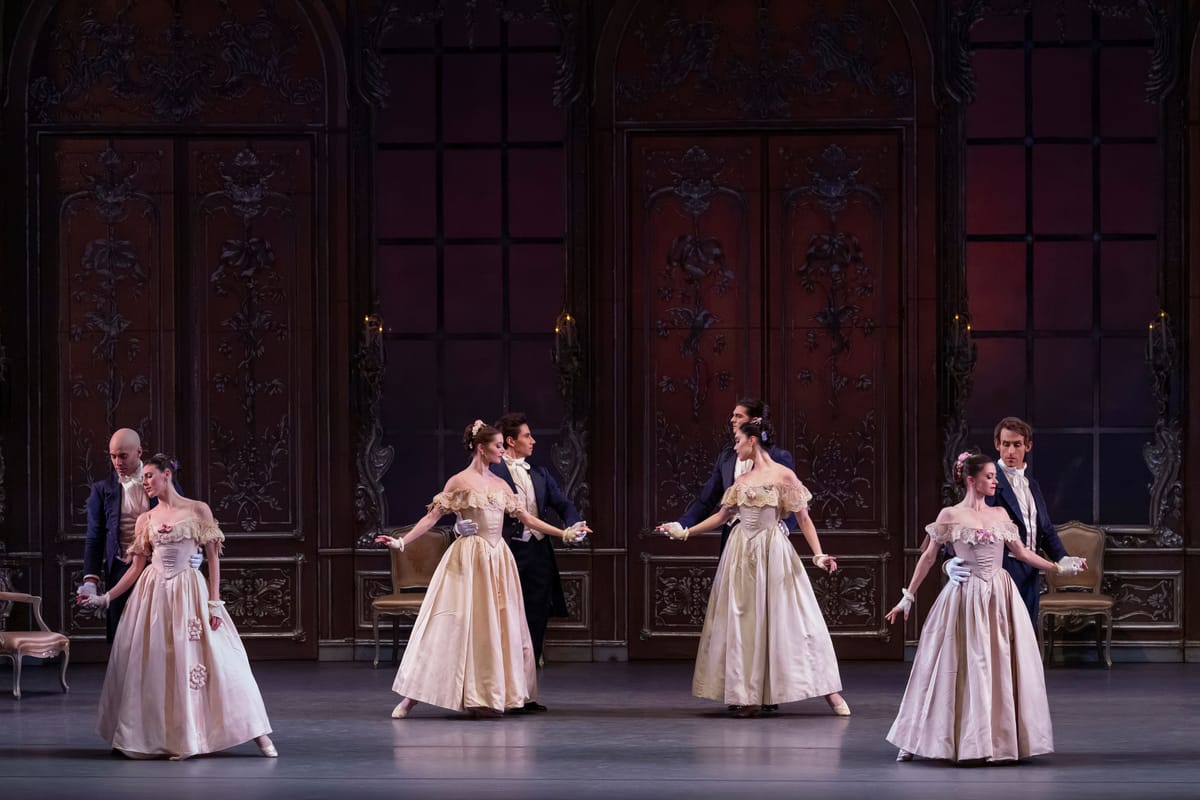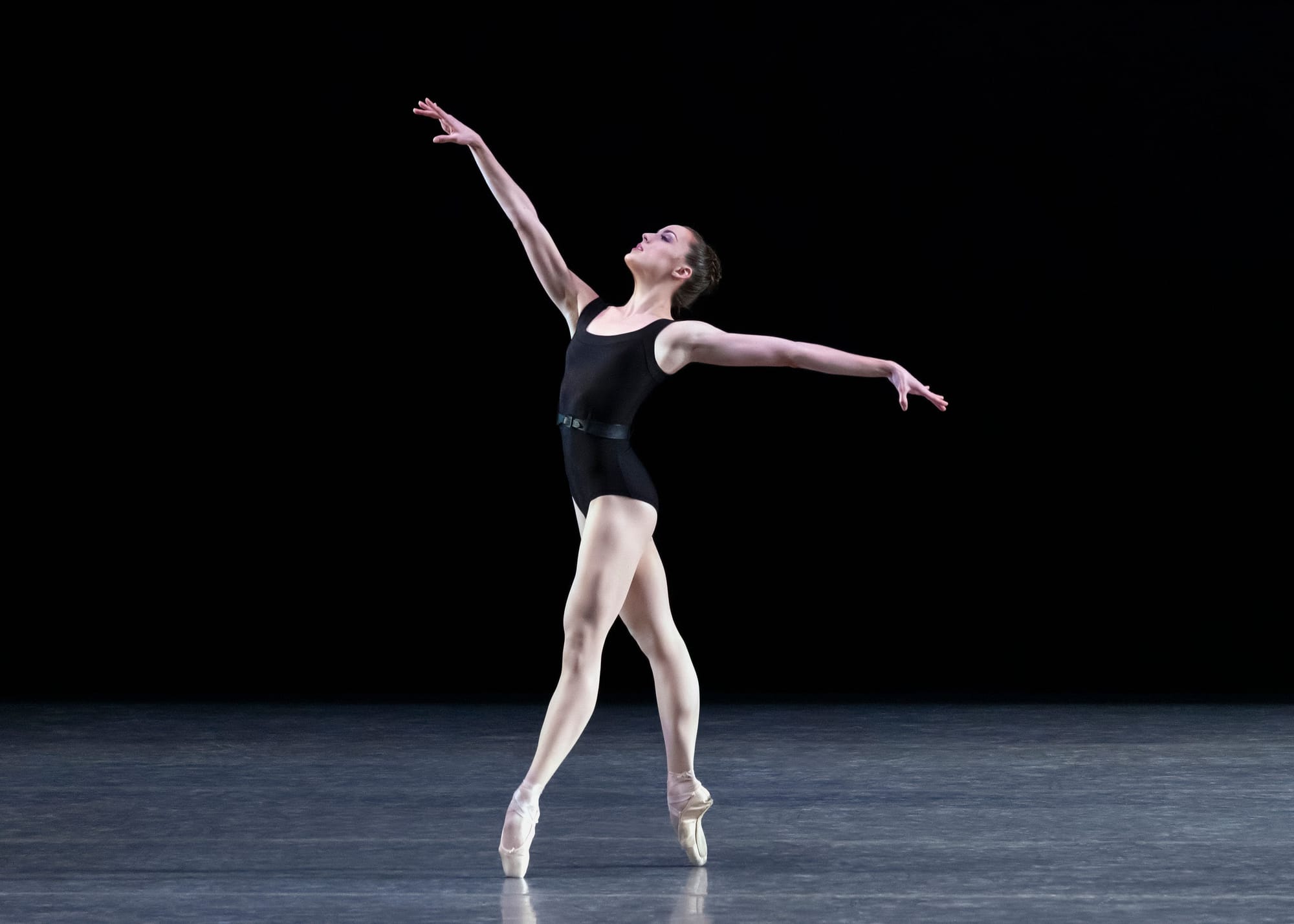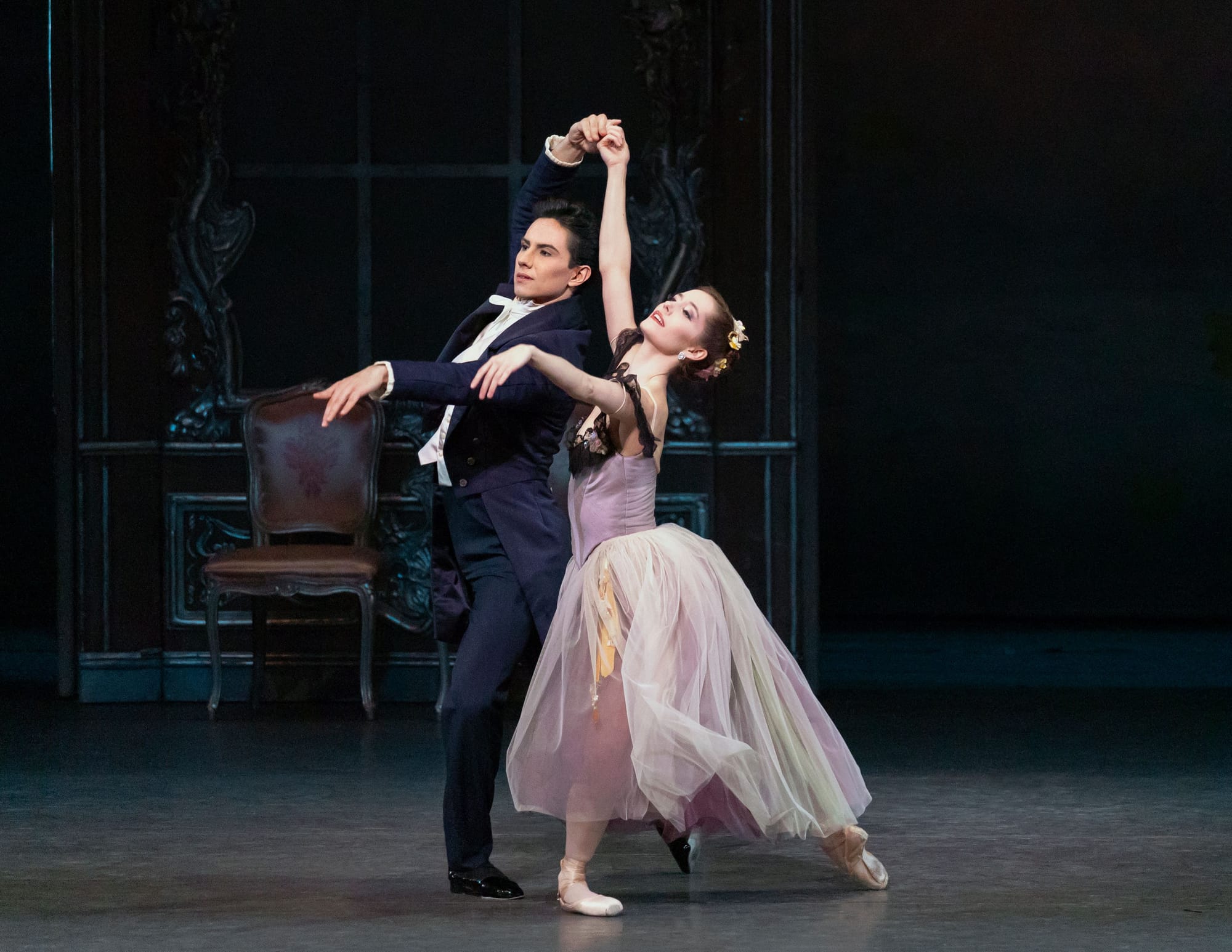Old Friends

"The Four Temperaments", "Liebeslieder Walzer"
New York City Ballet
David H. Koch Theater
Lincoln Center
New York, New York
February 6, 2024
NYCB’s yearlong celebration of its 75th anniversary is in it second phase, called "Evolution", but it paused for an evening to look back, and this program featured two of Balanchine’s most memorable works, “The Four Temperaments” (1946) and “Liebeslieder Walzer” (1960), two of Balanchine’s most memorable works. “The Four Temperaments” is danced frequently but “Liebeslieder Walzer” is a rarer treat. It requires four singers who can performs Brahms’ two song cycles and a coherent, well-rehearsed cast to create the stories of four upper-class nineteenth century Viennese couples using only waltzes and style.
Though almost eighty years old “The Four Temperaments” is an astonishing work, clear, sharp, and fresh, abstract yet warm. Sara Adams, in her debut, and Davide Riccardo were especially notable in the Third Theme, dancing with an elegant flow (Adams’ arms were especially lyrical). They didn’t exaggerate any of the slightly odd shapes (at one point the man seems to turn the woman into a double bass) but hinted at undercurrents of emotion, propelled by the lush music.
Sebastian Villarini-Vélez did not quite have the measure of Melancholic, demonstrating the positions rather than experiencing them; the end of his solo isn’t a test to see how far his back can bend, it is a vision of a man who is pressed down by fate; his dancing, though clear, needed more weight and struggle. Sanguinic, danced by Isabella LaFreniere, which Preston Chamblee in his debut, did have a struggle. LaFreniere burst on with a thrilling urgency, but she didn’t deliver the shimmering footwork which echos the little grace notes in the music, instead diving into her menage with such force that she almost fell out of her turns. This seemed to unnerve her, and the rest of her performance was a bit muted. The final circular lifts, nobly supported by Chamblee, though, had a memorable grandeur, showing off her eloquent upper body.

Adrian Danchig-Waring’s Phlegmatic gave his upper body a workout too, and his deadpan approach as he reached upwards until he just gave up and relaxed into the music was very funny. There was nothing funny about Emily Kinta’s Choleric. She was an Amazon, using her height and power to dominate the stage. The moment when she spread out her arms to calm and control the other dancers was riveting; she was someone who must be obeyed.
There are rules to be obeyed in “Liebeslieder Walzer” too, rules of old-fashioned courtesy and decorum. The hour-long ballet is one long waltz; the first half in a polite social scene and danced in flat shoes, and the second in ballet land, where the thoughts and feelings live. The audience, unfortunately, could have used a bit more decorum, since many used the brief break between the scenes to dive to their cell phones, and the flickering screens did interfere with the hushed world the dance had created.
In the best performances the four couples, especially the women, have distinct personalities, so redolent of the original cast; this evening’s performance featured Megan Fairchild in the Jillana role, with Adrian Danchig-Waring (his début), Mira Nadon (her début) in the Diana Adams role, with Peter Walker (his début), Tiler Peck in the Violette Verde role, with Tyler Angle, and Unity Phelan in the Melissa Hayden role, with Roman Mejia (his début). In the first performances I saw (the 1980's revival coached by Karin von Aroldingen), the Jillana role showed a hesitation, a yearning for something beyond her polite world, Verdy’s role hinted at a tragic early end, the Adams role portrayed a youthful couple enraptured with each other, and the Hayden role was danced as a mature woman, aware of difficulties but deeply and serenely in love with her husband. The men have less distinctive roles, but all need an old fashioned, self-assured, reserved dignity. Unfortunately, some of the men in this cast looked as if they were wearing gloves for the first time and weren’t quite sure how to react to a curtsey.
The women, too, were a bit indistinct, and though immaculately and lushly danced, the characters did not always make a distinctive impression. Mira Nadon, with her elegance and composure, was the most memorable and she glowed with youthful ardor. I loved her little details, like the shy pause and almost audible sigh she gave when Walker whispered in her ear. She did overdo the enthusiasm a bit in the first scene though, shooting her leg up so high that her elegant skirt flopped over her head, exposing her underwear to her companions, a distinctly unladylike move.
Tiler Peck danced with a luminous grace, but I missed the tragic dimension I have seen in other dancers, most notably Kyra Nichols who looked at her partner with such desperate sorrow he was forced to hide his eyes. In the second act, Peck melted into the delicate hints of the Romantic style with her soft arms and light jumps, but beautiful though she was, there was a sense of a woman dancing, not a spirit. Fairchild, too, danced her role with delicacy and grace, but the impression of a restless, slightly unhappy woman, settling perhaps into her expected role, was only hinted at.

Phelan and Mejia were a bit of an odd couple; his is on the short side and his eager verve, so thrilling in many roles, didn’t project the protective dignity I have seen in earlier portrayals. Phelan’s placid grace and serenity were too calm for a mature woman reliving her experiences and their final pas de deux, where they seem to merge their thoughts as he gently sets her down while her leg traces a generous arc on the ground, moving with a calm and steady security and he repeatedly lifted her seemed strained. But the lingering impression of those beautiful waltzing couples dancing in some long lost world of elegance and dignity is haunting, and always welcome.
© 2024 Mary Cargill



